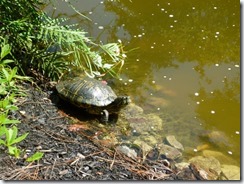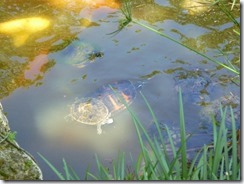The words “What If?” are at the heart of every plot. Currently I’m in the throes of plotting my next Bad Hair Day mystery. Having already written the draft of a synopsis, I welcome the “what if’s” that are flying into my brain.
What if the rivalry between ranchers Hugh and Raymond has a personal basis involving Hugh’s dead wife? What if the murdered forest ranger’s spouse had gotten turned down for a loan to start a business? Would that have induced her to take out a life insurance policy on her husband? What if the bad guy is selling his valuable ore to terrorists who resell it in exchange for weapons? What if….?
Once the story elements are in your head, your subconscious goes to work and new ideas keep popping up. Some are viable. Others get discarded as unrealistic. It’s wonderful when you get to this stage because the connections start snapping together. Pieces of the puzzle coalesce into a whole, and your story is ready for writing. But how do you reach this pinnacle of inspiration?
You begin with a story premise. In a mystery, it might be the victim. Who’d want to kill him and why? You sketch the suspects in your mind. Friends, family, and business associates who might have something to gain go on your list. What if suspect A’s wife was having an affair with the victim? And what if the husband discovered their liaison? What if suspect C owed the victim money? Or maybe the victim was extorting money from a colleague, knowing something that would get the guy fired. You examine their motives, seeking the secrets these people would do anything to hide.
Keep in mind that plot is not story. Plot is the background, the secrets everyone is keeping, the motive for the murder, the devious scheme created by the villain. You are creating a tapestry that leads to the opening scene. That’s where the story starts and moves forward.
In a romance, you’ll want to determine the first meet between hero and heroine. They’re attracted to each other but initially sparks fly between them. What if…they had a history together? Or what if she hates him because…? What if they have to work together in order to…?
Or a thriller: What’s at stake? Who is behind the dastardly scheme for world domination this time? Who’s the hero? What resources does he possess? How is he going to hit the ground running? What if…he’s semi-retired and he first gets wind something is wrong when…? He’s recalled to duty? He meets his old girlfriend and she says….? Or what if she’s in trouble? What if he receives a cryptic note from her?
Whenever I get ideas relevant to the plot, I jot them down in a plotting file for that book title. I may use them or not, but this way I don’t lose them.
Being a plotter and not a pantser, I write a complete synopsis before I begin writing the story. This synopsis may go through numerous drafts before I get it right. I pass it through my critique partners and make more changes. I ask my husband to read it so he can evaluate the logic. He’s good at catching things that don’t make sense or need clarification. In the case of my current WIP, I’m consulting my cousin who lives in the area where the story is set. She’s been invaluable in pointing out what works and what doesn’t.
I’ve been doing research on the Internet as I go along. I have a whole page of links and topics to explore. It comes to mind that I’ve been calling the law enforcement officer in the story a sheriff. Is this appropriate to the location? What’s the difference between a sheriff and a police chief? Does a sheriff only work for the county? Does this apply to a state other than Florida? Another item to research goes on my list.
Meanwhile, what other motives might people have for doing in the victim? What hidden connections might exist between my characters? Often these secrets reveal themselves during the actual writing process. New angles spring to life, taking the story in a new direction. But before you get there, you have to lay the foundation.
These story details possess you and take over your mind. You think about them all your waking moments. The plotting threads sizzle, curl, and snap in your brain like writhing snakes until one bites you. What if…?
<><><>
Are you a plotter or a pantser? Do you figure out these details as you write or before you begin the story?






























































